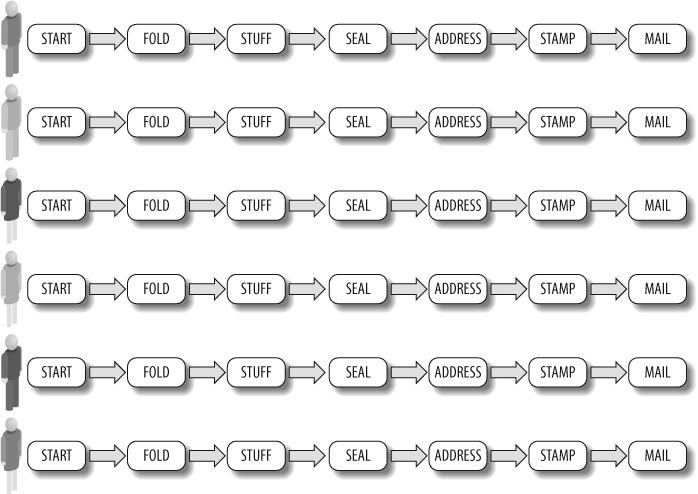Mixed Solutions
Consider the task of folding, stuffing, sealing, addressing, stamping, and mailing letters. If you assemble a group of six people for the task of stuffing many envelopes, you can arrange each person to specialize in and perform one task in a pipeline fashion (Figure 2-5). This contrasts with data parallelism, where you divide the supplies and give a batch of everything to each person (Figure 2-6). Each person then does all the steps on his collection of materials as his task.

Figure 2-5. Pipelining—each Person has a different job

Figure 2-6. Data parallelism—each person has the same job
Figure 2-6 is clearly the right choice if every person has to work in a different location far from each other. That is called coarse-grained parallelism because the interactions between the tasks are infrequent (they only come together to collect envelopes, then leave and do their task, including mailing). The other choice shownin Figure 2-5 is known as fine-grainedparallelism because of the frequent interactions (every envelope is passed along to every worker in various steps of the operation).
Neither extreme tends to fit reality, although sometimes they may be close enough to be useful. In our example, it may turn out that addressing an envelope takes enough time to keep three people ...
Get Intel Threading Building Blocks now with the O’Reilly learning platform.
O’Reilly members experience books, live events, courses curated by job role, and more from O’Reilly and nearly 200 top publishers.

